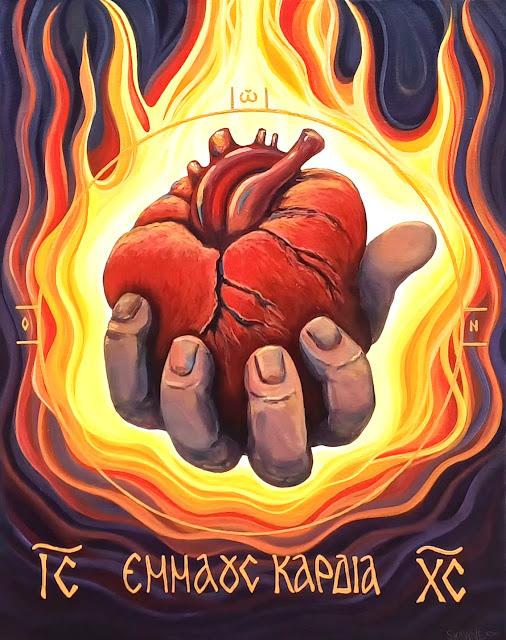Psalm 8
O LORD, our Lord,
how majestic is Your name in all the earth!
You have set Your glory above the heavens.
Out of the mouth of babies and infants,
You have established Your strength because of Your foes,
to still the enemy and the avenger.
When I look at Your heavens, the work of Your fingers,
the moon and the stars, which You have set in place,
what is man that You are mindful of him,
and the son of man that You care for him?
Yet You have made him a little lower than the heavenly beings and crowned him with glory and honor.
You have given him dominion over the
works of Your hands;
You have put all things under his feet,
all sheep and oxen,
and also the beasts of the field,
the birds of the heavens,
and the fish of the sea,
whatever passes along the paths of the seas.
O LORD, our Lord,
how majestic is Your name in all the earth!
The Work of Your Fingers
(An Illumination of Psalm 8)
7 in. x 15 in., acrylic and gold metallic on canvas
$250 unframed (no frame necessary)
While reading in the Psalms, the imagery of the eighth psalm filled my mind with idea of the fingerprint of God. I thought of the whorled pattern of galaxies and neurons, of suns and moons tracing their predictable paths, of planetary movement, our own system a labyrinth of ellipses. The whirlpool of air currents and waters, the striated rows of both waves and plant cells and the helix of plant growth and DNA. All of these bear the characteristics of the divine fingerprint; the poetry rebounds from metaphor and surprises us with the nearly-literal. This offends our sensibilities. There's a certain amount of safety in keeping God cloaked in symbolism and simile. We can play about with metaphysical wordplay, impress each other with our profound-sounding platitudes. And while it is true that God is mysterious and beyond our ability to fathom, He also puts Himself right. in. your. face. He writes His name with a child's fat-fisted scrawl; He pushes His signatory crayon hard into the pulp of His creation, watching you to see if you will be willing to notice the deep trenches of his patterned marks, or else turning aside to be preoccupied with the randomness of the errant wax flakes. In all these things, everything lives and moves and has its being, from divine creatures and stars and angels to people and animals and plants and microbes and cells and elements. And in the center, a single red blood cell, signifying the One who took on flesh and poured Himself out for humanity and creation.
Also, I dig groovy fonts.








